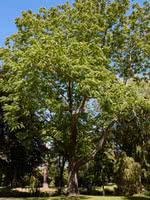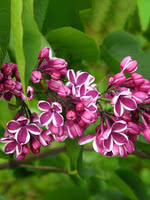Mon-Fri 9am - 5pm Mountain time
Black Walnut vs Sensation Lilac
Juglans nigra
Syringa vulgaris Sensation
NOT AVAILABLE THIS SEASON - MIGHT RETURN
The Black Walnut is a slow growing, large, straight-stemmed tree with an open crown. It produces dense, very hard, edible nuts.
Black Walnut has a deeply-furrowed, black bark. Its leaves are about 1 foot long, composed of 15 - 23 slightly stalked leaflets on a moderately stout stock which provide good dappled shade.
Despite being highly valued for its edible nuts and its shade tree aesthetics, it is rare to see this tree on the prairies.
Note: Black Walnut's roots produce a substance named juglone that is toxic to some other plants. Consider this when choosing where you plant a black walnut, as you will not be able to grow tomato, potato, cabbage, eggplant, blueberry, azalea, rhododendron, lilac, red pine and apple in the surrounding area.
Note: Plant this tree once. It will not respond well to transplanting.
Note: Although self-pollinating, planting two trees significantly improves nut production.
A top CO2 absorbing species. Experts think this tree may help climate change more than others.
Sensation Lilac is an outstanding shrub known for its fragrant, bicolor flowers. In mid-spring, stunning purple flowers with white borders emerge and cover the entire plant.
Once the flowers bloom, they give off a beautifully sweet scent that is enjoyed by people, butterflies, hummingbirds, and other wildlife. Plant Sensation Lilac in full sun to produce the most vibrant flower color.

